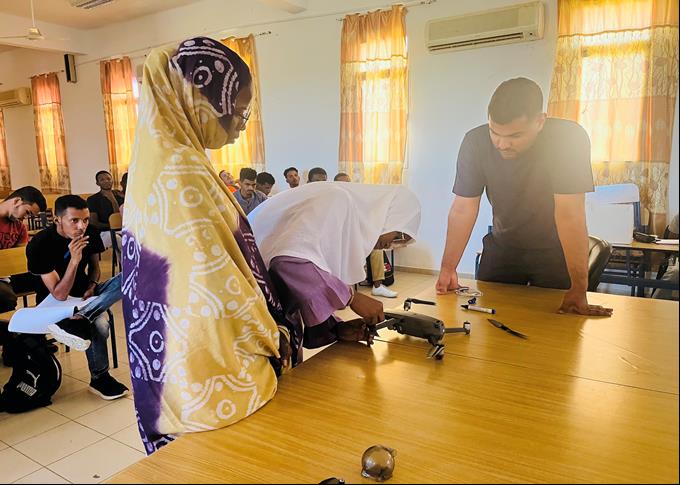FAO Launches Farmer Observatory in Rosso, Mauritania

3 May 2023, Mauritania – FAO recently launched Mauritania’s first Farmer Observatory in partnership with innovation incubator HADINA RIMTIC, serving the Rosso region of Mauritania. Hosted by Institut Supérieur d'Enseignement Technologique de Rosso (ISET), the Observatory acts as a digital agriculture hub for students, faculty and members of the community.
Agriculture contributes as much as 18.5 percent of Mauritania’s GDP. Yet, pervasive climatic and economic shocks have undermined the sector, leading to massive rural exodus and alarming rates of unemployment, especially among youth. Boasting one of the region’s youngest populations, around 52 percent of the population is below the age of 20 and nearly 75 percent is below the age of 35.
With its rapidly expanding digital communications infrastructure, Mauritania is in a good position to leverage digital technologies to boost agriculture productivity, strengthen agrifood value chains and create much needed decent employment opportunities for its youth. Investments in digital agriculture are also critical to reversing the growing digital divide between rural and urban spaces.
“The Farmer Observatory has been a real example of success and shows how partnerships can yield lasting and sustainable results. A key indicator of this is the government’s interest in replicating the experience and establishing a second Observatory to serve the region of Kaédi,” said Alexandre Huynh, FAO Representative in Mauritania.
One of the main functions of the Farmer Observatory is to give students hands-on training on the use of drone and satellite technologies to collect data from local farms, then analyse this data to generate extension advice that can help farmers improve their yields. Two drones were re-purposed by the Observatory for this function.
The Observatory will also host HASSAD, a mobile application developed with the support of FAO to provide an online marketplace for agri-food products and services. The application has been developed, tested and refined by HADINA and is being handed over to the Observatory where it will be administered as a service for agrifood system actors, but also a source of information on market gaps and needs.
“The Observatory is an asset that we are using to teach students how to use information and communication technologies in different agriculture activities,” noted Jeyid Yacoub Daye, a professor at the ISET’s Faculty of Agriculture.
The ultimate objective of the Farmer Observatory is to prepare youth to be agents of change and innovation in Mauritania’s agrifood system while enabling them to pursue high-skilled quality jobs in the sector.
“I have been able to get hands on experience dealing with the latest agriculture technologies which has been very beneficial to my studies and hopefully to my future work,” stated Aminatta Aboubakry Sy, rural engineering student at ISET.
FAO, together with ISET, HADINA RIMTIC and the Ministry of Agriculture aim to continue strengthening and expending the Observatory as well as replicating the model in other regions of Mauritania.
